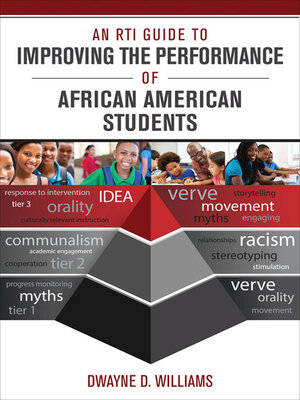
Sign up to save your library
With an OverDrive account, you can save your favorite libraries for at-a-glance information about availability. Find out more about OverDrive accounts.
Find this title in Libby, the library reading app by OverDrive.



Search for a digital library with this title
Title found at these libraries:
| Library Name | Distance |
|---|---|
| Loading... |
Help students thrive with this systematic approach to culturally responsive instruction!
Research shows that students of color learn best in classrooms that reflect their cultural values. This breakthrough book shows educators how to create culturally relevant RTI models that help diverse students thrive!
Step-by-step, you'll learn to skillfully apply 4 core characteristics critical to culturally responsive instruction: communalism, movement expressiveness, orality, and verve. Richly detailed case studies and evidence-based, process-focused strategies will help you to:
Use this thought-provoking handbook to confidently design high quality, culturally responsive instruction that fits the cultural needs of most African-American students!
"All educators working with diverse students should read this book! Using personal experiences, the author provides examples of culturally responsive classroom instruction that brings tears to my eyes realizing what I missed in my own education."
—Julie Esparza Brown, Assistant Professor in Special Education
Portland State University
"Diversity in race and culture is one of the greatest issues facing students and teachers in education today. Without changing our mindset and understanding how others learn, we will never meet the expectations of educating all people. This book is outstanding in addressing these issues. It is truly a powerful read and something all educators should keep as a resource when making decisions for students who do not fall into that stereotypical ′box′."
—Cindy Lawrence, Curriculum Coordinator
Lumberton ISD
"This book presents salient and provocative ideas with regards to teaching the way students learn. These ideas are not readily spoken about in teacher preparation programs or in schools. This book provides an avenue to discuss the ways African American students learn best."
—Lydia Adegbola, Assistant Principal
NYC Department of Education






